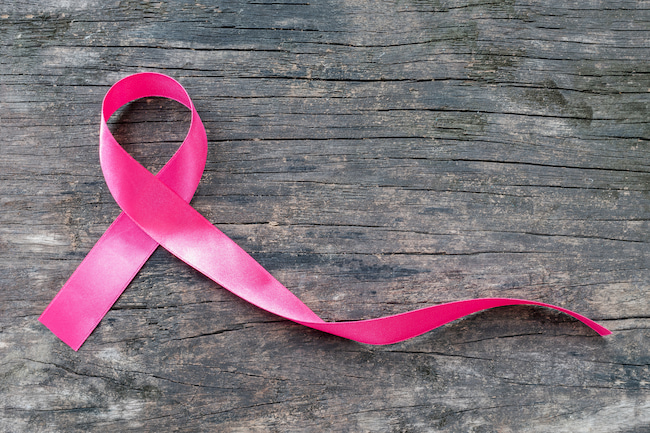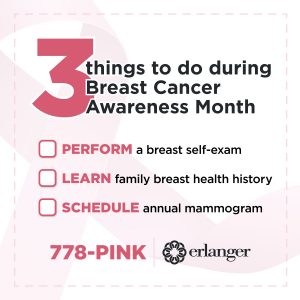One in eight women in the United States will be diagnosed with breast cancer in her lifetime. In 2023, an estimated 297,000 women and 2,800 men will be diagnosed with invasive breast cancer.
The good news? There are over 3.8 million breast cancer survivors in the United States, and death rates from breast cancer have declined since about 1990. This decline is partly due to better screening, early detection, and increased awareness.
To do our part in continuing this trend, we’re sharing three things you can do to protect your breast health:
-
- Perform a breast self-exam. The American Cancer Society doesn’t recommend frequent full self-exams for women with average risk. However, they recommend becoming familiar with how your breasts look so it’s easier to detect abnormalities in the future. Take some time this month to perform this convenient, no-cost exam as a part of your overall breast cancer screening strategy. If you do discover a lump or other breast change, don’t panic. Breasts often have lumps or lumpy areas; most are not cause for concern. However, it never hurts to discuss the difference with your doctor — especially if you detect a lump that seems to become larger or more prominent over time. If you menstruate, waiting an entire menstrual cycle to see if the change disappears may be helpful.
- Learn family health history. If you are a woman whose parent, sibling, or child has had a breast cancer diagnosis, you are at a higher risk of breast cancer. Like other cancers, breast cancer is sometimes caused by inherited mutations in BRCA1 and BRCA2. Sometimes, your doctor might recommend genetic counseling based on your family history. So, besides knowing which of your immediate family members have had breast cancer, what do you need to know about your family history?
-
- Talk to your parents, sisters, brothers, children, grandparents, aunts, uncles, nieces and nephews. If any had cancer, list the age at which he or she was diagnosed. For any that have died (of any cause), list their age at time of death and cause of death.
- Remember that the risk for breast and ovarian cancer comes from both sides of the family, not just your mother’s, so don’t forget to include all your health history for your father’s relatives, too.
- Update the health history regularly and inform your doctor about any new cancer cases (of any type) within the family.
- Take Erlanger’s Risk Assessment
- Schedule your annual mammogram. A mammogram is a non-invasive X-ray to check breasts for breast cancer and other abnormalities. Because 75% of women diagnosed with breast cancer have no family history and are not considered high-risk, screening is paramount to save lives! Mammograms help identify cancer early on and have helped reduce breast cancer mortality by 40% since 1990. We recommend that all women have an annual mammogram starting at age 40. If you have elevated risk in your family or would like to receive a screening before age 40, review your family history and any other concerns with your primary care physician, who can refer you to a breast specialist or Erlanger’s High Risk & Cancer Genetics Program if needed.
Whether you’re scheduling a breast cancer screening, seeking advice on cancer prevention, or living with a cancer diagnosis, the Center for Breast Health offers complete services for your breast health at one convenient location. Call 423-778-PINK to schedule your mammogram or learn more at the Center for Breast Health.








